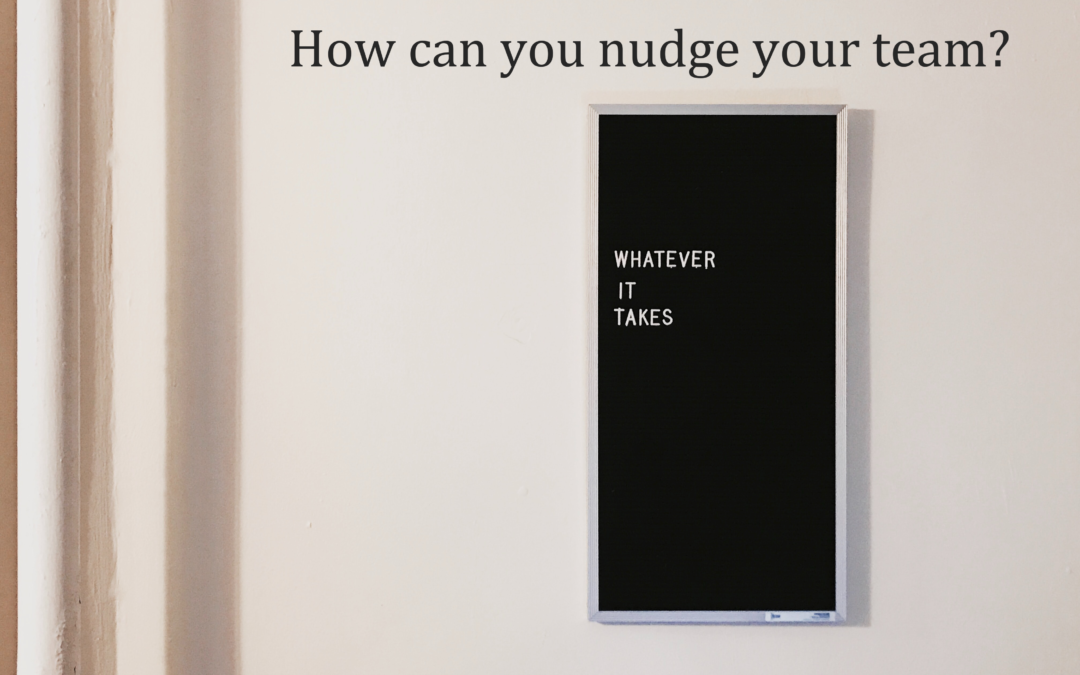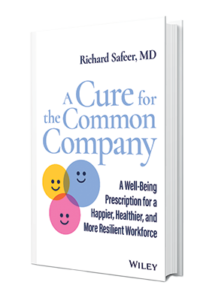Turns out, at least 12 different ways! It’s safe to say that your lifestyle choices have been influenced – and continue to be influenced – by culture connection points. If you want to create healthy norms on your team and in your workplace or extinguish unhealthy behaviors, touchpoints will play a crucial role in your strategy.
What is a culture connection point?
Culture connection points are how we influence the norms of a culture; how we shape the behavior of a group. How we raise awareness and get people to pay attention! An email from HR encouraging you to use your vacation days or a poster reminding you to drink water throughout the day are culture connection points (but also a little ho hum). Your boss taking you to lunch is another culture connection point. All internal transactions where an employee interacts with the company system (including the leaders that represent the company) can be defined as culture connection points.
Organizations know the importance of connection points when they are related to an external group, consumers. Businesses are eager to see the need and usage of their products or service from their customer’s point of view. Marketing is all about identifying user journeys and influencing customers across key touchpoints to persuade them. Billions of dollars are spent every year to study and optimize these interactions.
Internal touchpoints are also vital. Achieving daily health and well-being practices requires an understanding of the importance of these internal webs of influences and then making strategic adjustments.
12 cultural connection points to bring about a well-being culture
Recruitment and Selection
Make well-being expectations clear at the outset. If you have a non-smoking workday policy, why not state it in the job posting? Highlight some of your other well-being norms and benefits to allow the candidates to choose whether they want to be part of a healthy workplace. Listen closely to the answer to an open-ended question like, “Tell me a little bit about yourself”. Will this person add to the well-being culture or be a distraction?
First Impressions
Onboarding will create strong first impressions in your employees. In a matter of days, the new hire will figure out if yours is an organization that prioritizes well-being or if it willfully or unintentionally ignores the health of the employees.
Make an effort to set the right first impression by offering healthy foods and beverages, highlighting well-being resources, and even engaging in a healthy practice, like a walking meeting in those early days. You can also connect the new recruits to wellness champions or role models early on.
Information and Communication
Keeping healthy lifestyle changes in focus requires ongoing communication and feedback. Your enthusiastic endorsement of wellness activities can go a long way toward getting people engaged. Don’t forget to have some of the messages come from leadership. Their participation will go a long way.
It’s also important to ensure that all communication is positive and inspiring. Talk about lifestyle assets rather than health risks. As Robert Cialdini and his students Noah Goldstein and Vladas Griskevicius found out, descriptive calls to action will work better.
In their study, to encourage guests to reuse towels in hotels, they tried various types of messages. The one that outperformed others requested guests to join 75 percent of guests in helping save the environment.
Positive and participatory messages like these will work better than scaremongering pieces of information. Humor is also an excellent tool to incorporate in communication about wellness initiatives.
Stories and Narratives
Stories can captivate and influence us in profound ways. Organizations can develop a library of stories around well-being. I suggest you use real success stories from individuals as well as groups of people working within the organization. While these stories can be informally shared around the company, leaders should also formalize the process by broadcasting them through official platforms.
Well-being should be a central theme in these narratives. They should be inspiring, realistic, and credible. Where needed, recruit help from your marketing and communications colleagues to create a more impactful message. Ensure that they don’t sound preachy but interesting and realistic.
Rewards and Recognition
While most organizations have a reward system, there’s a compelling need to align them with well-being goals. The organization should consciously and publicly reward employees that encourage them to make healthy lifestyle choices. For example, the reward for a job well done can be chosen from a catalog of health fitness products.
Holiday gatherings and events could celebrate well-being practices among members of the workforce. Lunch with the company’s president when achieving a well-being goal is a great way to elevate the stature of well-being within an organization.
Push-back
There are two ways in which push-back can be used to promote well-being. The first tactic is to prohibit or restrict unhealthy practices like smoking and the consumption of alcohol or other drugs. Be consistent and ensure that there is support available if individuals desire to change their unhealthy behaviors.
You should also use push-back when healthy practices are confronted. For example, if someone meditates during lunch breaks and is mocked for it, the system should push back against it. People who have healthy food choices or those who exercise at work shouldn’t be ostracized. Leaders should immediately squash any derogatory remarks about healthy practices.
Relationships
Relationships are crucial to the success of any new habit or activity. Most people want to fit in with their group, so they conform to the group’s behavior or at the very least, not confront it. You can encourage your employees to participate in wellness activities together which will create the necessary organic support to continue these healthy habits.
The objective should be to create social connectedness based on good health and well-being. You can slowly extend that network to their friends, housemates, and family members. That’s how organizations create ecosystems that employees won’t want to leave.
Modeling
Identify and share inspirational stories of role models, whether it’s you or someone else who would have quit an unhealthy habit or started a healthy one. You can also draw from the experiences of those from outside the system.
But remember to share the journeys of these role models including the challenges they regularly face. Humanize the role models and make those experiences relatable for others to emulate. The objective is not to project them as superheroes but to inspire others. Then use communication touchpoints to make sure everyone knows about these models.
Learning and Training
Leaders and managers should actively encourage training for healthy lifestyles. Where possible, give your employees opportunities to share what they have learned with their workgroup. Something as simple as how to shop for healthy food could become contagious in your organization.
If your organization has wellness classes and programs available, but the manager doesn’t give the employee time to participate, we have a clear problem. Make the resources available at different times and both virtually and in person, to accommodate for different shifts and work locations.
Resource Commitment
Organizations shouldn’t approach well-being programs as an expense. They should be seen as a strategic investment that needs time, space, and other resources. While financial investments can be easily quantified – and speedily approved if the leadership is in alignment – time allocation needs special attention.
One of the best resource commitments is a trained professional to create and execute the well-being culture strategy. It’s hard to build a culture of health, let alone by someone leading the charge at part-time employment. Make a commitment!
The Built Environment
Sometimes the biggest barrier to keeping our health goals is the physical environment in which we work. If your employees don’t walk at lunch because there’s ‘no place to walk’, be creative! Mark a route outside the building or even through the halls that has posted distances and adorned with inspiring messages. You might even recreate your closest stairwell to be more inviting.
Some barriers are a little more challenging. If your vending machines and cafeteria don’t offer healthy choices, in addition to advocating for a food makeover, work with your team to create a system where members take turns to provide healthy snacks or side dishes. Not only does this make having healthy food during the day easier, it contributes to building your team community (see the ‘Social Climate’ article).
Policies
One of the most effective ways to add to a culture of health and well-being is by crafting policies that align with your goals. You may not be able to mandate people to start eating healthy or exercising but you can create conducive atmospheres for these behaviors.
Safety protocols are an example of how to overtly support health and well-being goals. Remote and flexible work schedules are another way in which your organization can demonstrate the importance of your employees’ health and well-being.
How many culture connection points do we need?
Deploying four or five well thought out culture connection points is usually enough to see changes.
My favorite connection point story is ‘pushing back’ against a bake sale to raise money for the American Diabetes Association. The ADA does great work. I just didn’t think we should worsen one’s diabetes or add to someone’s risk for diabetes to raise money for the ADA – so I spoke up!
What is your favorite culture connection point story? Tell us in a comment to this post.
To know more about how your organization can build a well-being culture, continue to visit RichardSafeer.com and connect with me on LinkedIn.


